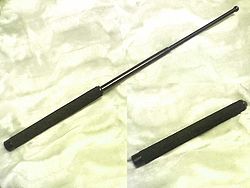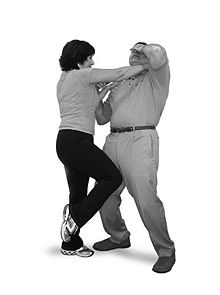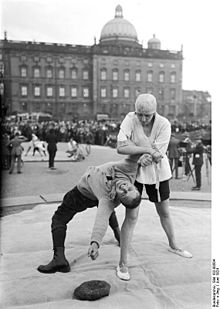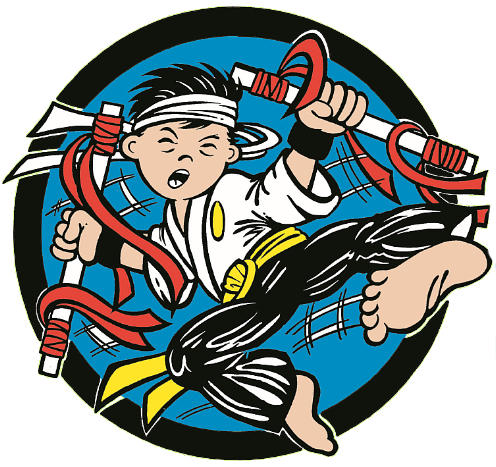


Self-defense From Wikipedia, the free encyclopedia https://en.wikipedia.org/wiki/Self-defense
(self-defence in some varieties of English) is a countermeasure that involves defending the health and well-being of oneself from harm. The use of the right of self-defense as a legal justification for the use of force in times of danger is available in many jurisdictions, but the interpretation varies widely.
Physical Physical self-defense is the use of physical force to counter an immediate threat of violence. Such force can be either armed or unarmed. In either case, the chances of success depend on a large number of parameters, related to the severity of the threat on one hand, but also on the mental and physical preparedness of the defender.
Unarmed Many styles of martial arts are practiced for self-defense or include self-defense techniques. Some styles train primarily for self-defense, while other martial or combat sports can be effectively applied for self-defense. Some martial arts train how to escape from a knife or gun situation, or how to break away from a punch, while others train how to attack. To provide more practical self-defense, many modern day martial arts schools now use a combination of martial arts styles and techniques, and will often customize self-defense training to suit the participants' lifestyles, occupations, age groups and gender, and physical and mental capabilities.
Armed Further information: Non-lethal weapon and Melee weapon
A wide variety of weapons can be used for self-defense. The most suitable depends on the threat presented, the victim or victims, and the experience of the defender. Legal restrictions also greatly influence self-defence options.
In many cases there are also legal restrictions. While in some jurisdictions firearms may be carried openly or concealed expressly for this purpose, many jurisdictions have tight restrictions on who can own firearms, and what types they can own. Knives, especially those categorized as switchblades may also be controlled, as may batons, pepper spray and personal stun guns and Tasers - although some may be legal to carry with a licence or for certain professions.
Non-injurious water-based self-defense indelible dye-marker sprays, or ID-marker or DNA-marker sprays linking a suspect to a crime scene, would in most places be legal to own and carry.
Everyday objects, such as flashlights, baseball bats, newspapers, keyrings with keys, kitchen utensils and other tools, and hair spray aerosol cans in combination with a lighter, can also be used as improvised weapons for self-defense. Tie-wraps double as an effective restraint. Weapons such as the Kubotan (pocket stick) have been built for ease of carry and to resemble everyday objects.[4] Ballpoint pen knives, swordsticks, cane guns and modified umbrellas are similar categories of concealed self-defense weapons that serve a dual purpose.
Mental Mental self-defense is the ability to get into the proper mindset for executing a physical self-defense technique. Many martial arts schools and self-defense classes focus primarily on the physical nature of self-defense and often neglect the mental aspect. If you are skilled in the physical aspects of a defensive technique, but lack the mental toughness and tenacity to execute it, you will not be able to perform - especially under duress. Controlled environments cannot easily mimic the stress and adrenaline dump which occurs during an attack. There is a very real need to be able to enter the proper "warrior mindset" if one is to have a realistic chance of surviving a potentially deadly encounter. This warrior mindset is the ability to focus purely on the successful outcome of a situation without becoming concerned with the consequences, even if they prove fatal in the dedicated pursuit of your desired outcome. The ability to go over, under, around or through any obstacle is the essence of this "never quit" mindset - similar to that of the Samurai of Japan. Self-preservation is a very powerful motivator and it is essential for ensuring that one has the mental toughness and proper mindset to emerge the victor in an encounter with one or more attackers/aggressors.
Avoidance Being aware of and avoiding potentially dangerous situations is one useful technique of self-defense. Attackers will typically select victims they feel they have an advantage against, such as greater physical size, numerical superiority or sobriety versus intoxication. Additionally, any ambush situation inherently puts the defender at a large initiative disadvantage. These factors make fighting to defeat an attacker unlikely to succeed. When avoidance is impossible, one often has a better chance at fighting to escape, such methods have been referred to as 'break away' techniques. Understanding the 'mindset' of a potential attacker is essential if we are to avoid or escape a potentially life-threatening situation.
De-escalation Verbal Self Defense, also known as Verbal Judo or Verbal Aikido,[7] is defined as using one's words to prevent, de-escalate, or end an attempted assault.[8] It is a way of using words as weapons or as a shield. This kind of 'conflict management' is the use of voice, tone, and body language to calm a potentially violent situation before violence actually ensues. This often involves techniques such as taking a time-out, and deflecting the conversation to individuals in the group who are less passionately involved, or simply entering into protected empathic position to understand the attacker better. Lowering an attacker's defence and raising their ego is one way to de-escalate a potential violent situation.
Personal alarms Personal alarms are a way to practice passive self-defense. A personal alarm is a small, hand-held device that emits strong, loud, high-pitched sounds to deter attackers because the noise will sometimes draw the attention of passersby. Child alarms can function as locators or device alarms such as for triggering an alert when a swimming pool is in use to help prevent dangerous situations in addition to being a deterrent against would-be aggressors.
Self-defense education
Self-defense techniques and recommended behavior under the threat of violence is systematically taught in self-defense classes. Commercial self-defense education is part of the martial arts industry in the wider sense, and many martial arts instructors also give self-defense classes. While all martial arts training can be argued to have some self-defense applications, self-defense courses are marketed explicitly as being oriented towards effectiveness and optimized towards situations as they occur in the real world. It should not be presumed however that sport based systems are inadequate, as the training methods employed regularly produce well conditioned fighters experienced in full contact fighting. However, there is a difference between Martial Arts, and Self-Defense, and therefore as a general principle, Martial Arts is unsuited for Self-Defense application. There are a large number of systems taught commercially, many tailored to the needs of specific target audiences (e.g. defense against attempted rape for women, self-defense for children and teens). Notable systems taught commercially include:
- civilian versions of modern military combatives, such as Krav-Maga, Defendo, Spear, and Systema
- Jujutsu and arts derived from it, such as Aikijujutsu, Aikido, Bartitsu, German ju-jutsu, Kodokan Goshin Jutsu.
- Model Mugging
- Traditional unarmed fighting styles like Karate, Taekwondo, Kung fu, Hapkido, Pencak Silat, etc. These styles can also include competing.
- Traditional armed fighting styles like Eskrima and Arnis. These include competing, as well as armed and unarmed combat.
- Street Fighting oriented, unarmed systems, such as; Jeet Kune Do, Kajukenbo, Won Sung Do, and Keysi Fighting Method
Sport based systems, such as boxing, kickboxing, Muay Thai, savate, shoot boxing, Sanshou, grappling, judo, Brazilian jiu-jitsu, Sambo, mixed martial arts, and wrestling are sport oriented, therefore are limited by their individual ruleset however they are often practiced in full contact and could be adapted for self-defense .
Why Us
- Many years of experience
- Spacious, clean, and safe facilities
- A positive learning environment
- Flexible class times
- Special events throughout the year
- Personal attention for every student
Contact Us
Family Martial Arts Centers
3558 Skyway Drive , Santa Maria, CA, 93455
Call Us: 805-868-3950
https://martialartssantamaria.com

Service Area
- Santa Maria, CA
- The Experience You Want
- The Service You Expect
- The Quality You Deserve!
- Call 805-868-3950 for Free Estimate


